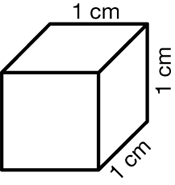In this lab, students develop a plan for accurately finding the volume of large containers. They find the volumes of at least three containers of various sizes and shapes. Students use addition, subtraction, multiplication, and division to solve problems involving volume. In working with containers of different shapes, the students are reminded that the tallest container may not always have the largest volume.
Content in this Lesson
- Measuring accurately the volume of large, unusually shaped containers [E10].
- Measuring volume using graduated cylinders [E10].
- Solving multidigit addition, subtraction, multiplication, and division word problems involving volume using mental math strategies [E3, E4, E8].
- Interpreting remainders of multidigit division problems [E6].
- Making and interpreting a bar graph [E13].
- Using patterns in data to make predictions and solve problems [E13].
- Using the relationship between larger and smaller units of measure to solve problems [E9].
- Attending to precision and accuracy.
- Using medians to average data [E12].
- Choosing appropriate graph representations.
Daily Practice and Problems Y–DD
Assessment in this Lesson
| Assessment | Expectation Assessed |
|---|---|
|
Fill It Up Lab |
|
|
DPP Item AA |
|

















